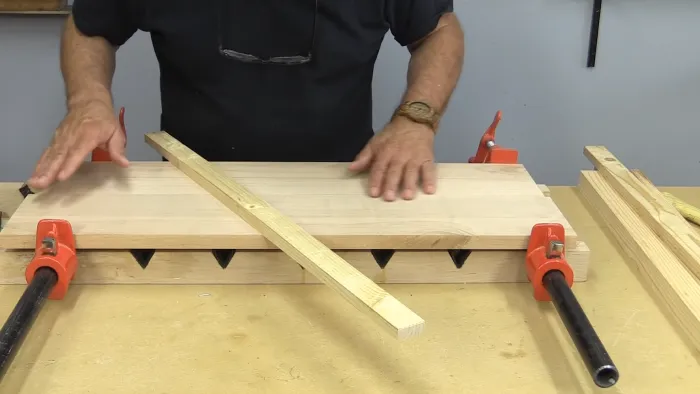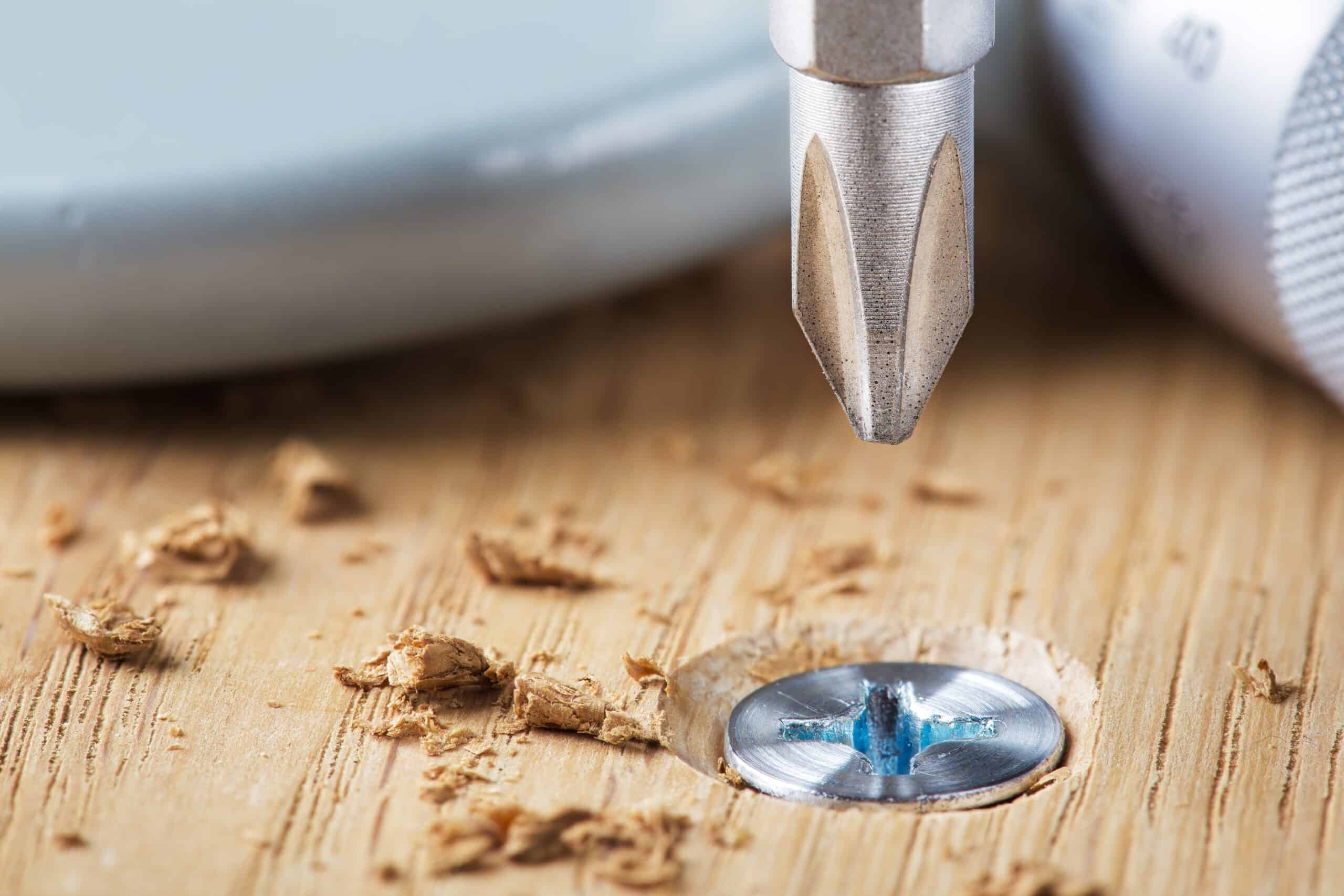WoodenuKnow.com is a participant in the Amazon Services LLC Associates Program, an affiliate advertising program designed to provide a means for sites to earn advertising fees by advertising and linking to Amazon.com and may earn from qualifying purchases.
Woodworking is a craft that combines artistry and precision with a bunch of tools. Among these tools, a humble yet indispensable instrument is the cauls (also known as clamping cauls). They have a flat or slightly curved surface directly interacting with the workpiece.
The primary purpose of a caul is to prevent distortion, warping, or other undesirable effects that can occur during glue-ups by distributing pressure evenly during the gluing or clamping process. Despite their unassuming appearance, rectangular or curved caul, they are widely recognized among woodworkers.
Throughout this article, we’ll explore everything you need to know about cauls, from how to make them to how to use them. So keep reading to elevate your woodworking game with cauls.
What are the Differences Between Clamps and Cauls?
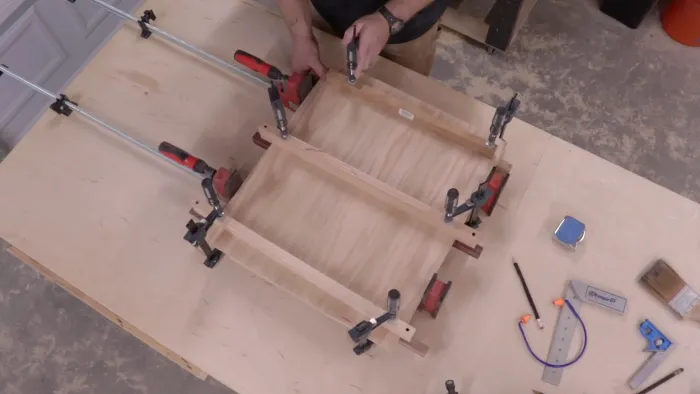
Several key points come to mind when considering the differences between clamps and cauls in woodworking.
- Construction materials
- Size and shape
- Contact area
- Pressure distribution
1. Construction Materials
Clamps are commonly constructed with materials like steel, aluminum, or plastic. These materials are durable, allowing clamps to exert significant pressure on workpieces. Also, clamps often feature adjustable features to accommodate various sizes and shapes of workpieces.
Meanwhile, caul’s construction materials differ from clamps. Cauls are typically made from wood, such as hardwood or MDF, which provide stability and a flat surface.
However, caul materials can also include hard plastic. This thin material offers flexibility and can be used for specific applications, such as preventing damage to delicate surfaces or creating a tight seal.
2. Size and Shape
Clamps come in various shapes and sizes, such as bar clamps, pipe clamps, C and F clamps. They have adjustable mechanisms that allow you to tighten or release them to exert pressure on the workpiece.
Also, these clamps typically have symmetrical, flat jaws or bars to grip workpieces and apply pressure directly to the simple butt joints.
Conversely, clamping cauls or bars are typically flat, straight, or slightly curved. The curvature, if present, is usually subtle and designed to distribute pressure evenly across the surface of the workpiece. Caul flat panels or bars aren’t intended to grip or hold the workpieces.
3. Contact Area
Clamps directly contact the workpieces, applying pressure where their jaws or bars are positioned. They grip the pieces firmly to hold the boards flat and together.
On the other hand, clamping cauls are placed on top of the glued joint or workpiece. The larger contact area of cauls allows for more uniform pressure distribution, minimizing the risk of uneven outside edge glue-ups. This is especially important when working with delicate or irregularly shaped pieces.
4. Pressure Distribution
Clamps exert localized pressure at specific points where their jaws contact the workpiece, resulting in uneven pressure distribution and potential distortion.
Alternatively, flat caul primarily aims to distribute pressure evenly across the workpiece during pressing or gluing. The clamps’ force is evenly distributed by placing the caul on the workpiece. This helps prevent distortion, warping, or bowing of the workpiece, resulting in flat, well-bonded surfaces.
How Do You Make Wood Cauls?
You’ll need to follow a series of steps to make wood cauls, such as:
Step 1: Select Proper Wood Stock
Before making flat or curved cauls, you must carefully select the proper solid wood stock. The type of wood stock you choose will depend on several factors, including the specific project you’re working on, the required length of the cauls, and the desired stability of the material.
Hardwoods such as red oak or maple are popular for wood cauls due to their durability and resistance to warping. These woods are known for their strength and ability to withstand pressure, making them ideal for creating reliable and long-lasting cauls.
Step 2: Determine Caul Dimensions
Now consider the width, length, and thickness to determine the dimensions of your wood cauls. These factors will depend on the specific requirements of your woodworking project.
For width, cauls typically range from 2 to 4 feet, providing enough caul surface area to distribute pressure evenly across the workpiece. Length is determined by the size of the project, with cauls often extending several feet to accommodate larger pieces.
Thickness is another important consideration, with common sizes ranging from 1 to 2 inches. Thicker cauls provide greater rigidity and stability, ensuring effective clamping pressure.
Step 3: Cut the Wood Stock
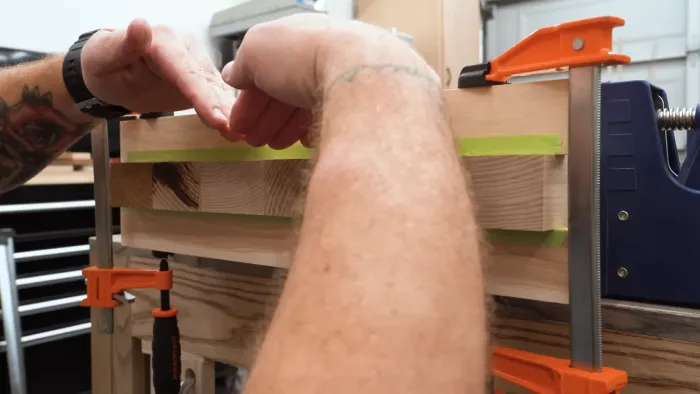
Take a table or circular saw to accurately cut the wood stock into pieces that match the dimensions. Ensure that the cuts are straight and square to achieve the desired results. Take your time and use appropriate safety measures when operating the saws.
Use smooth and steady movements to more control the saw when cutting the wood stock. Keep your fingers away from the blade, and use push sticks or other safety devices when necessary.
Once the wood stock is cut into pieces, check the dimensions of individual boards to ensure they match the specifications. Make any necessary adjustments before moving on to the next step in creating your wood caul.
Step 4: Plan and Shape the Stock
To plan and shape the stock for making wood cauls, consider the desired dimensions and curvature before proceeding. Use a planer or hand plane to reduce the thickness if your wood stock is thicker than the desired thickness for your straight cauls.
You can create the curvature using a belt sander or a hand plane for curved cauls. Begin by marking the crown, the highest point of the curve, typically in the center of one side of the caul.
Then, use a belt sander or hand plane to gradually remove material from the edges towards the slight crown mark, ensuring a smooth and even curvature.
Step 5: Sand and Smooth the Stock
Next, sanding the wood stock is necessary to smooth out imperfections and achieve a polished surface for your wood cauls.
Start using coarse-grit sandpaper to remove rough edges or bumps on the surface. Hold the sandpaper firmly, moving it back and forth, following the wood grain. Be sure to apply even pressure to ensure an even sanding.
Once you have removed the roughness, switch to a finer grit sandpaper to further smooth the stock. Repeat the sanding process, gradually increasing the fineness of the sandpaper until you achieve the desired smoothness. Remember to always sand with the grain to avoid scratching the wood.
Step 6: Final Inspection
Now, inspect the wood cauls you have created for any defects, ensuring they’re smooth and free from imperfections. Check for any signs of warping, such as unevenness or twists, as these can affect the caul’s effectiveness and compromise the quality of your woodworking projects.
Look closely at the surfaces of the straight cauls to ensure they’re flat, without any bumps or depressions that could cause problems during glue-ups. Applying a finish, such as wax with wax paper, can help prevent the excess glue from sticking to the cauls.
How Do You Use Clamping Cauls in Woodworking?
To use caul in woodworking, you will need to follow some procedures:
1. Position the Cauls
Place the cauls on top of the glued joint, ensuring that the curved side faces the workpiece. This positioning is fundamental for achieving optimal results in woodworking projects.
Also, placing one caul with the curved side facing the workpiece creates a balanced pressure distribution across the joint. The cauls should span the entire length of the joint to ensure even pressure distribution and prevent any gaps or inconsistencies in the glue joint.
Clamping with cauls helps to minimize the risk of warping or distortion during the clamping process. Properly positioning the cauls is an important technique to master to achieve high-quality and professional woodworking results. You can also utilize packing tape to stop the glue from sticking to the cauls.
2. Position the Clamps
Using cauls in woodworking involves positioning the clamps to apply pressure evenly and securely. Place a clamp on each end of the clamping cauls, ensuring they align with the workpieces.
The clamps should be positioned vertically, exerting pressure directly downward to create a sandwich effect with the cauls in between. Ensure the clamps are tightened enough to maintain a firm grip but be cautious not to overtighten and risk damaging the wood or causing misalignment.
To achieve a balanced pressure distribution, alternate tightening the clamps on each side gradually increasing the pressure until the desired level is reached.
3. Tighten Clamps Gradually
Tighten the clamps to make contact with the cauls and the joint. From there, continue tightening the clamps and other carriage bolts in small increments, evenly distributing the pressure across the joint. The gradual tightening ensures a strong bond and brings the boards together.
Avoid over-tightening the clamps too quickly, as this can cause the cauls to shift or the joint to become misaligned. Take your time and monitor the clamping pressure to achieve the desired level of compression without compromising the integrity of the joint.
4. Inspect for Even Pressure
Inspecting for even pressure is essential to achieve accurate and uniform results in your woodworking projects. Visually examine the workpieces and pay close attention to the areas where the cauls are in contact with the wood. Look for any gaps or unevenness between the cauls and the workpieces.
If you notice any inconsistencies, make adjustments to the clamps accordingly. This may involve repositioning the cauls or tightening the clamps in specific areas to ensure that all parts of the workpieces receive equal compression.
5. Allow Time for Drying
Now, you must allow sufficient time for the adhesive to dry before removing the cauls and clamps from your woodworking project.
The drying time will vary depending on the type of glue you’re using and the specific project. Following the recommended drying time for the adhesive is important to ensure a strong and secure bond.
Rushing the process can result in a weak connection between the wood pieces and may compromise the overall integrity of your project.
What types of wood cauls can I use for different projects?
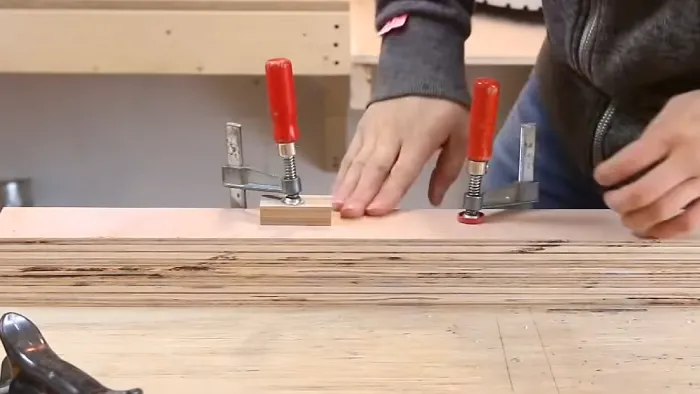
You can use various types of wood cauls for different woodworking projects. The type of caul you choose depends on the specific task at hand.
For general woodworking, rectangular cauls are commonly used. These simple and versatile clamping cauls allow you to apply even pressure across wider boards. But if you need to bend or shape wood, curved cauls are ideal. They provide the necessary support and pressure to achieve the desired shape.
Custom-shaped cauls can be made for more complex projects requiring unique shapes or angles. These cauls are tailored to fit specific woodworking tasks, ensuring precise and accurate results.
What is the best wood for making cauls?
When choosing the best wood for making glue-up cauls in woodworking, consider the specific task and select a solid wood suitable for the desired outcome.
Oak, maple, poplar, and plywood are all viable options for making cauls. Red oak and maple are popular choices due to their strength and durability. These woods provide excellent support and stability when used as cauls, making them suitable for various woodworking projects.
Poplar is another good option, as it’s relatively inexpensive and has good dimensional stability. Plywood can also be used, but it’s important to ensure that it’s of high quality and constructed correctly to avoid any potential issues.
Can I use pine for woodworking cauls?
Pine can be a choice for making cauls in woodworking, as it offers a soft and forgiving structure that helps prevent dents in the workpiece. The softness of pine allows it to conform to the shape of the workpiece, ensuring even pressure distribution during securing.
However, note that not all pine is suitable for cauls. It’s recommended to use clear, straight-grained pine boards without any knots or defects. Running the edges of the cauls over a jointer is essential to ensure they’re perfectly straight, as any imperfections can transfer to the workpiece.
Should I apply a finish to my wood cauls for glue-ups?
Applying a finish, such as wax or polyurethane, creates a barrier that prevents glue from seeping into the wood fibers or adhering to the surface. This makes cleaning dried glue easier and reusing your cauls for future projects.
When choosing a finish, consider your preference and the adhesive you use. Wax offers a smooth, low-friction surface, while polyurethane provides a more durable and resistant finish.
Unlock the Power of Cauls: Your Secret Weapon for Flawless Woodwork
Cauls in woodworking are valuable tools that provide even pressure and support during clamping. These simple yet meticulously crafted tools can transform your glue-up tasks, ensuring flatness and strong bonds.
Using cauls ensures that your projects are flat, level, and free from warping or distortion. Be aware that the type of wood used for making cauls will depend on your project’s requirements, but hardwoods like maple or oak are commonly used.
Also, apply a finish to your cauls to protect them from excess glue and prolong their lifespan. Embrace the power of the caul, and let your woodworking projects reach their full potential, one carefully crafted bond at a time.

